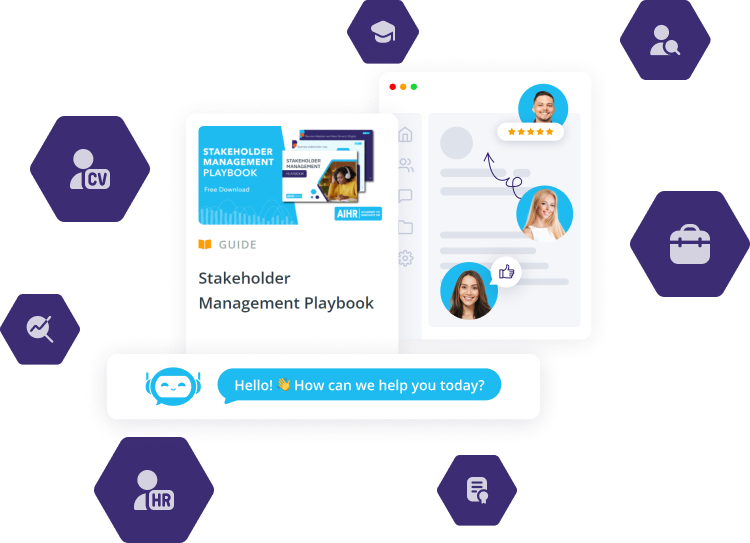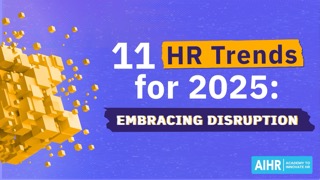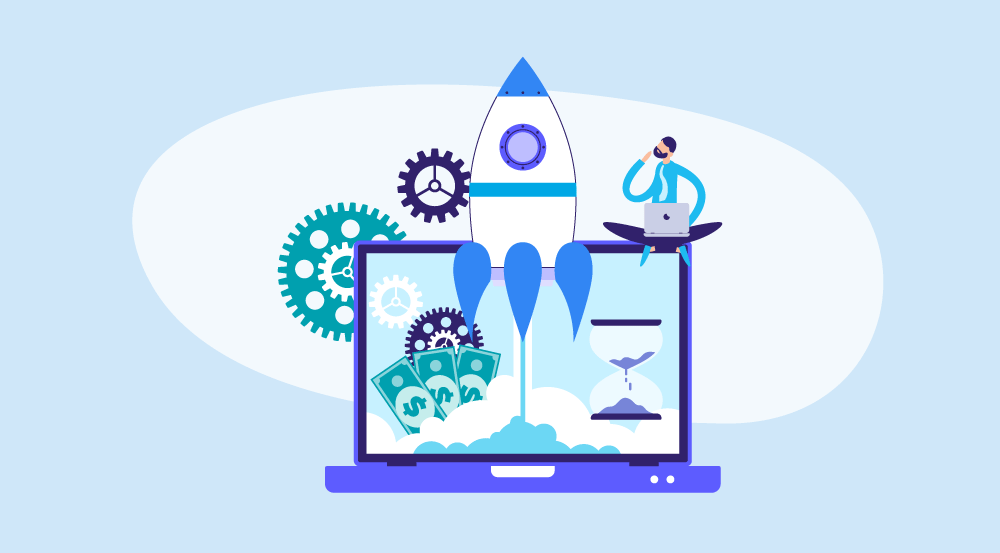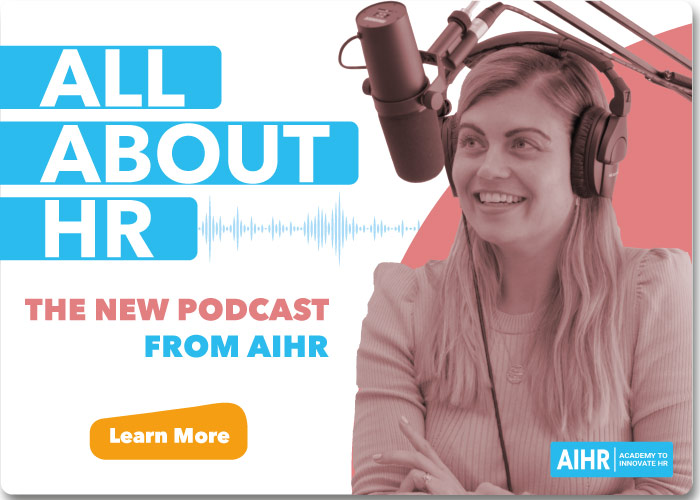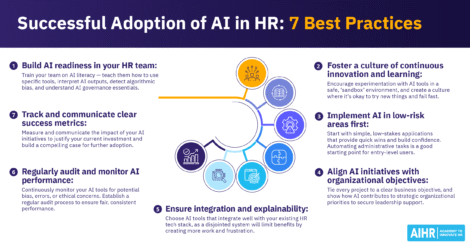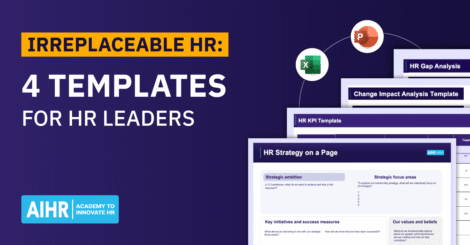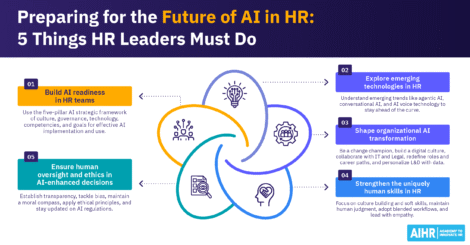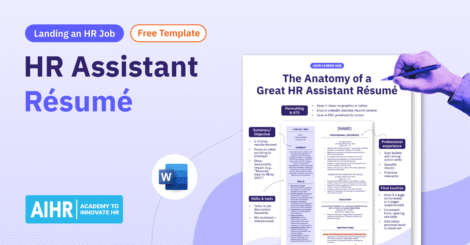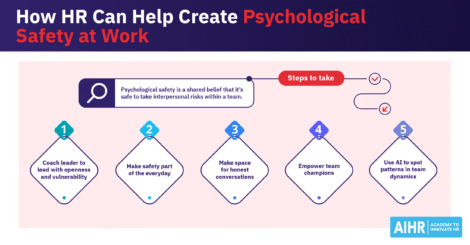AI transformation in HR goes far beyond adopting a few tools. It requires a shift in mindset, processes, and strategy to truly change how HR delivers value.
While 72% of companies across North America and Europe have already adopted AI in HR in some form, studies show that over 40% of organizations abandon their AI initiatives. So what does meaningful AI transformation actually look like in HR, and how can you approach it in a way that leads to lasting impact?
Read on to discover what exactly AI transformation in HR is, key ingredients for success, challenges to overcome, and steps of an AI transformation process.
Contents
What is AI transformation in HR?
5 key ingredients of a successful AI transformation in HR
HR AI transformation challenges
AI transformation process in HR
FAQ
What is AI transformation in HR?
AI transformation in HR involves updating or rehauling existing HR processes and operations with artificial intelligence. This doesn’t mean that AI is simply planted on top of existing processes or teams; it involves a fundamental rethinking of the HR operating model, systems, and more.
AI-driven HR transformation can (and should) be part of an organization’s larger HR digital transformation, which also includes technologies other than artificial intelligence, for instance, cloud-based technologies and the digitalization of employee records. It’s also increasingly tied to company-wide AI business transformation efforts, where AI is being embedded across functions to overhaul and automate core business processes.
AI transformation in HR has multiple benefits, including:
- Increased efficiency through the outsourcing of low-value, repetitive tasks to technology.
- Enhanced employee experience through, for instance, the use of chatbots and virtual onboarding assistants available to address employee queries 24/7.
- Increased HR productivity as AI takes on repetitive tasks, because HR teams can focus on strategic matters and boost their productivity.
- Better insights into workforce trends by using, for example, ChatGPT to summarize common themes from performance reviews, exit interviews, and employee surveys.
- Higher employee engagement through the use of GenAI to help you customize your employee communications (newsletters, policy updates, reward programs) and make them more effective, inclusive, and clear.
5 key ingredients of a successful AI transformation in HR
To successfully transform your HR department, you need to work on several building blocks, including:
Culture
Fostering the right culture is crucial. Building an AI-ready culture mainly involves three areas:
- Shifting mindsets: Ensure your HR team and the organization are ready for technological change by, among other things, educating them on what AI is and what it’s not.
- Creating an AI-friendly work environment: Employees should feel safe and supported when they experiment with AI tools. As such, they should understand the organization’s framework for using AI in HR (more on that below).
- Managing change on different levels: AI transformation affects everyone on the team. For it to be successful, HR leaders need to manage change on an individual, team, and organizational level.
Governance
Put simply, governance is about proactively creating a framework for using AI safely and transparently within the organization. There are three elements to keep in mind in that regard:
- Developing a strong AI policy: Ensure your policy includes information about how, where, and why people can use AI in HR.
- Defining clear accountability structures: Make sure everyone understands who is responsible for what, i.e., whose role is it to monitor risks, evaluate tools, approve vendors, and act on feedback.
- Incorporating cross-functional governance: The use of AI in Human Resources is a shared responsibility between multiple departments beyond HR, like IT, Operations, and Legal. Your governance framework should facilitate the cross-functional evaluation of and decision-making on the company’s AI tools and policies.
HR tip: Writing an AI policy
If you’re not sure where to start when creating an AI policy, download our free, customizable AI policy template to help you guide your own policy development.
Technology
These are the AI tools you need to solve real HR pain points while protecting data, stakeholder relationships, and employee trust. A couple of aspects to consider here are:
- Building a roadmap based on actual use cases: This ensures the focus stays on measurable business results rather than flashy features.
- Creating an implementation playbook: A playbook helps you build cross-functional alignment, measure adoption, and control risks. As such, it forms a repeatable template for successful AI rollouts.
- Fostering collaboration: The success of any AI implementation largely depends on how HR manages the various stakeholders. An excellent way to do this is by engaging business, Finance, and IT leaders under a shared KPI, such as reducing manual admin hours or improving time-to-hire.
- Unifying data: Feeding AI tools with unbiased and unified data is the best way to guarantee accurate predictions and keep compliance risk to a minimum.
Competencies
These are the skills and competencies your HR function needs to effectively use AI in HR. Before jumping into (costly) upskilling initiatives, answer these questions:
- Why do you invest in AI competencies (e.g., to improve employee experience, accelerate recruitment, etc.)?
- What resources does the company already have for AI upskilling?
- What particular AI needs does each role of the HR function have? A recruiter and an HRBP might require different things.
Goals
Effective AI goals are transparent, measurable, and achievable. They enable your HR team to both stay focused and demonstrate business value. A couple of things to keep in mind here are:
- Set OKRs that are realistic given your HR team’s current AI readiness and overall situation.
- Tie your OKRs to both business and HR priorities.
For an in-depth overview of these five key ingredients of a successful AI strategy for HR, including their respective common barriers, how to overcome them, and actual steps to get you started, you can check out AIHR’s AI Strategy Framework for HR Leaders.
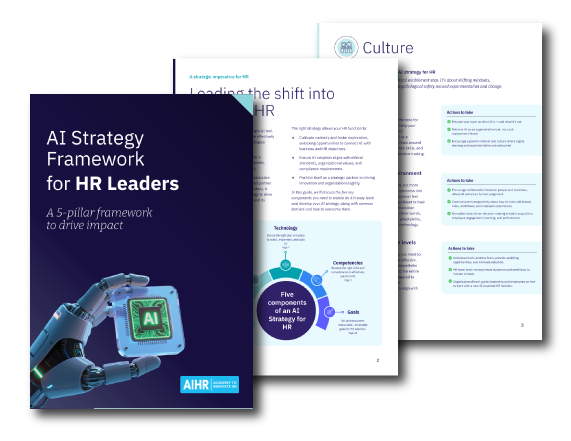
HR AI transformation challenges
As with any change, big or small, an AI transformation in HR comes with its own set of challenges, too. Examples include:
- AI tool overload and fatigue: With countless tools available and new ones popping up (almost) daily, it becomes hard to determine which ones deliver real value.
- Bias in algorithms: A well-known issue and one of the oldest challenges of AI in HR is that historical data skews results and can lead to unfair outcomes when left unchecked.
- Skills gaps and resistance to change: A lack of knowledge, the right skills, and fear slow down AI adoption.
- Integration with existing systems: New AI tools often clash with the organization’s legacy HR tech infrastructure.
- Lack of overall AI readiness: Missing strategy, governance, or resources (or all of these) weakens AI implementation success.
- Data, ethics, and legal compliance risks: Unclear laws, future regulations, and poor data use increase liability risks.
AI is reshaping HR, from workflows and decision-making to strategy and service delivery. But transformation only happens when your team knows how to use AI effectively, ethically, and with purpose.
With AIHR’s AI for HR Boot Camp, your team will:
✅ Build AI fluency to confidently work with emerging tools and technologies
✅ Gain hands-on experience applying generative AI in real HR use cases
✅ Learn how to lead AI adoption while managing risks, ethics, and compliance
🎯 Kickstart your HR team’s AI transformation with the knowledge that drives results.
AI transformation process in HR
The AI transformation in HR is not something that will happen overnight. It requires deliberate, structured effort to align technology with strategy, upskill teams, and gradually shift mindsets, processes, and culture.
We will apply the HR digital transformation framework to illustrate the various stages of the AI transformation process.
1. Business as usual
In this stage, HR operates under the assumption that the way it currently does things and the (tech) solutions it currently uses will remain relevant in the future.
The ‘business as usual’ stage can be characterized by:
- HR processes that aren’t standardized or streamlined yet.
- A lack of awareness among HR leadership about the benefits of and need for a shift toward AI-driven solutions.
- A scattered HR technology landscape and an almost non-existent impact of technology on the business and HR.
- A sense of ‘where do I start’ and overwhelm regarding the number of AI tools that exist, and concerns about data security and compliance among the HR team.
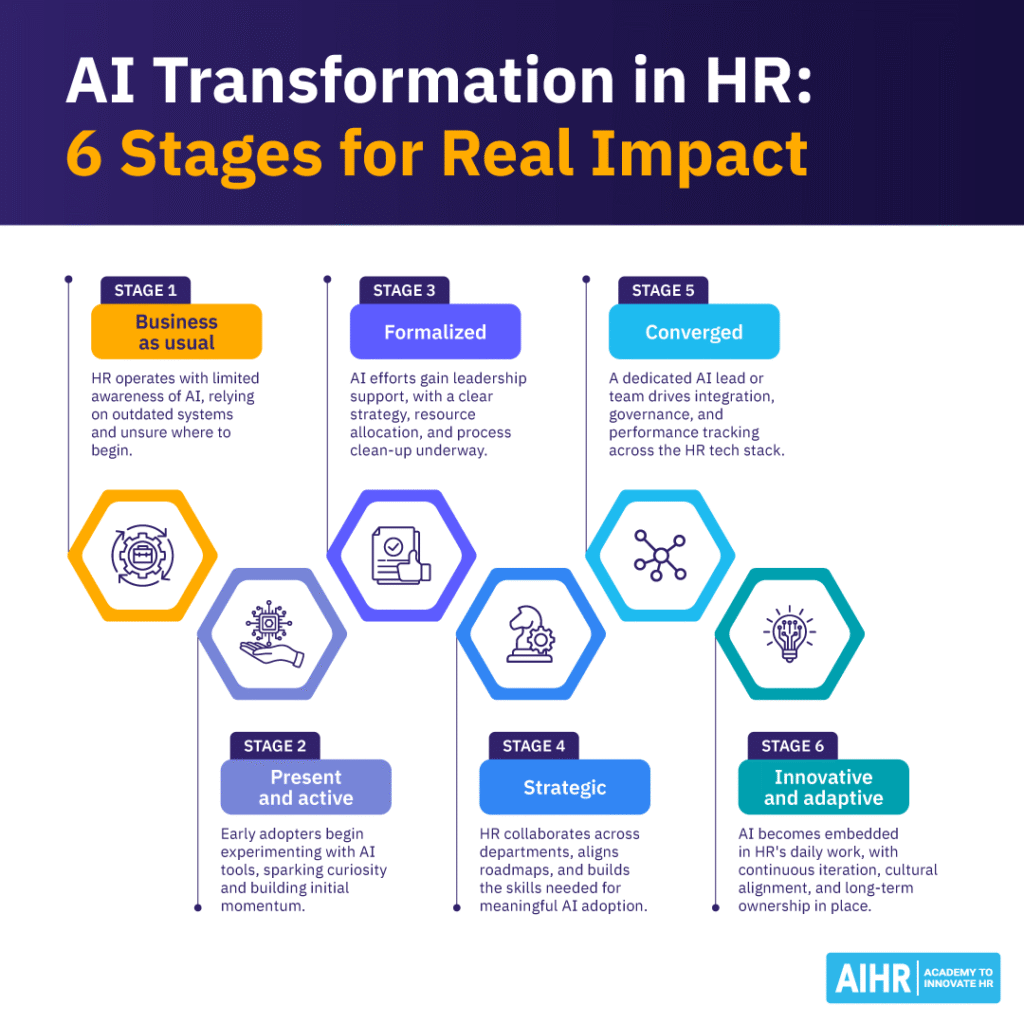
2. Present and active
In this stage, various individuals or small groups of people start to experiment with AI tools and technology, hence boosting curiosity (and perhaps some reluctance as well) and creativity within the HR function.
Actions you can take during the ‘present and active’ stage may include:
- Develop a shared vision of AI in HR in your organization together with the company’s leaders.
- Educate your HR team on what AI is and what it’s not, and address their concerns.
- Encourage a growth mindset and a culture that stimulates AI experimentation and learning.
- Create a use-case-based AI (tool) roadmap that solves actual HR pain points and aligns with business and HR priorities.
- Identifying your key objectives to redesign existing HR processes.
3. Formalized
During the third stage and partially thanks to some of the actions taken in the previous phase, AI experimentation becomes intentional and increasingly gains support from leadership.
Elements that are important in this stage of the AI-driven digital transformation include:
- Support from executive leadership to secure the necessary resources to develop a formal strategy for AI and automation in HR in your organization.
- A thorough assessment of existing HR systems and processes, identifying what can be automated, eliminated, etc.
- Buying or building AI solutions and tools to replace and enhance existing systems and processes based on your strategy and AI roadmap.
4. Strategic
In this stage, HR teams kick off collaboration with other departments such as Finance, IT, Legal, and Operations for their AI transformation to be successful.
Actions to take during this stage include:
- Aligning HR’s AI roadmap with the organization’s overall AI roadmap, and if there isn’t one (yet), to align it with the company’s digital roadmap.
- Framing AI as an enterprise strategy rather than an HR spend, and defining shared KPIs to turn collaborating departments into growth partners.
- Equipping the various HR team members with the right competencies based on the specific AI needs of their role.
- Training (part of) the HR department in the lean startup methodology and design thinking to build, test, and refine AI solutions in a way that’s agile, user-focused, and aligned with real business needs.
- Integrating AI fluency as an essential competency within all HR roles.
- Attracting specialized professionals if and where necessary.
5. Converged
In the fifth, converged stage, a dedicated AI transformation team – or person – is established to guide the HR department through this process and manage the change that comes with it.
Aspects to consider during the ‘converged’ stage are:
- Work towards an integrated set of platforms and HR tech stack, and make sure everything is easily accessible for all parties involved.
- Implement clear AI governance policies to manage risks like bias, data privacy, and transparency.
- Where relevant, use targeted pulse surveys to collect feedback from employees and business stakeholders on the effectiveness of AI automation and tools in the organization. Take action where needed.
- Track adoption and effectiveness of AI tools using specific HR KPIs (e.g., time saved, accuracy improved).
6. Innovative and adaptive
AI transformation in HR has become the new ‘business as usual.’ It is a continuous process in the HR function and, by extension, the rest of the organization.
Actions to consider during this stage include:
- Assigning a dedicated individual or a (small) team to monitor the growth and ongoing delivery of AI-driven HR transformation.
- Regularly aligning with (changing) business developments and needs.
- Continuously fostering an AI-ready culture within the HR department (and the wider organization).
The table below shows how AI transformation in HR plays out across the five pillars of AI strategy.
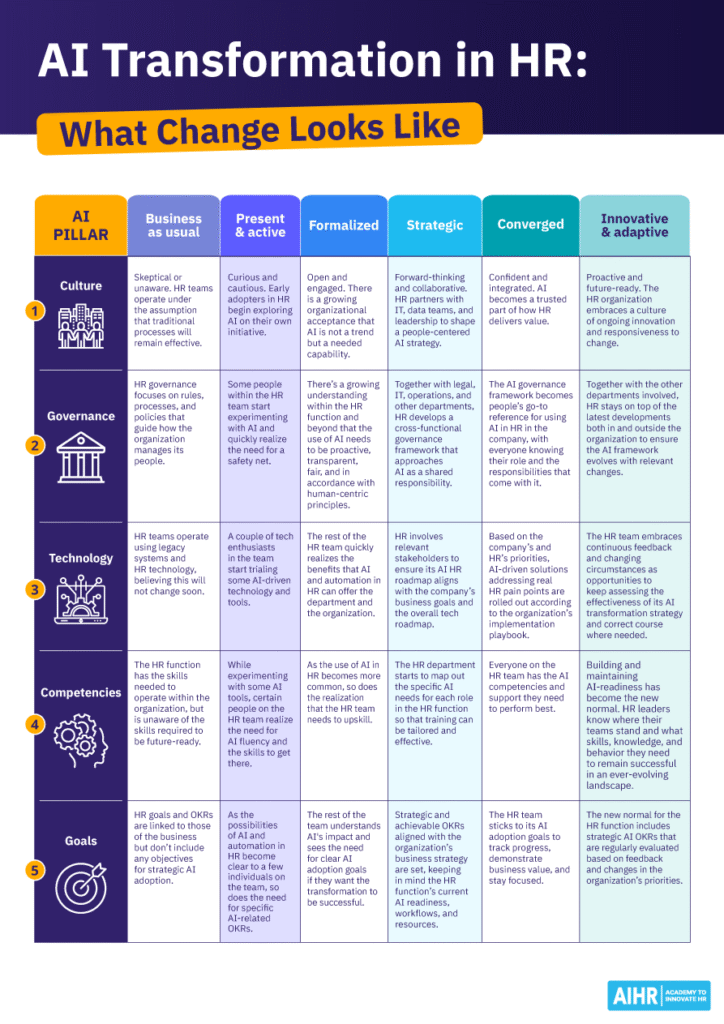
A final word
Initiating and managing AI transformation in HR has become increasingly important, if not indispensable, for the future of HR. Becoming aware of what the transformation process takes is an excellent first step towards creating lasting and impactful change.
FAQ
AI transformation in HR refers to updating or completely replacing existing HR processes and systems with AI-driven solutions.
There are countless ways in which AI can be used in HR. There is an AI solution or tool for every part of the HR function, from recruitment and onboarding to performance management, engagement, and L&D. Examples include AI tools that screen resumes and schedule interviews, generate personalized onboarding journeys, give real-time feedback on leadership behaviors, predict turnover risks, and tailor learning paths based on skill gaps.
AI in HRM is evolving from automating repetitive tasks like resume screening and scheduling to providing predictive insights and personalized employee experiences. As adoption matures, AI is becoming more embedded in decision-making, workforce planning, and continuous learning strategies.


